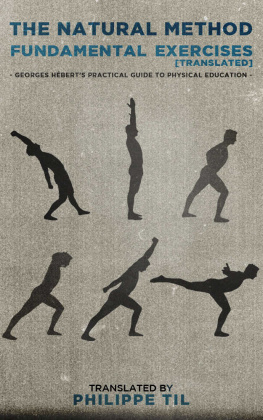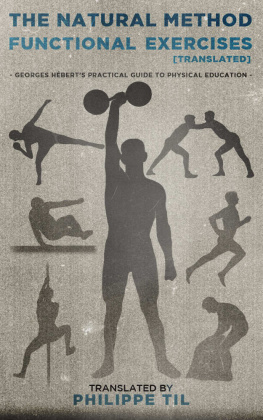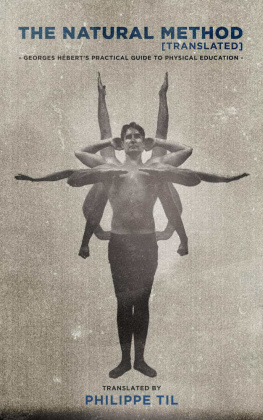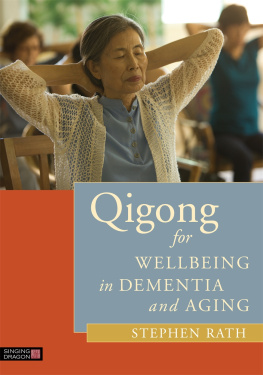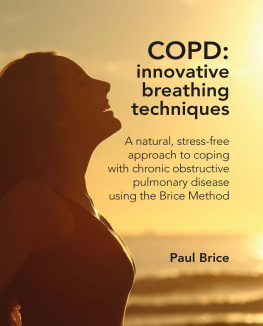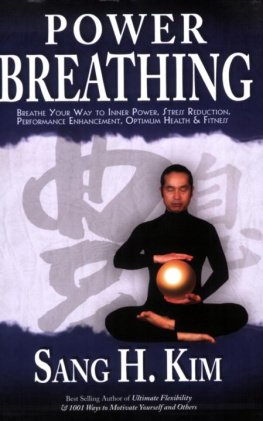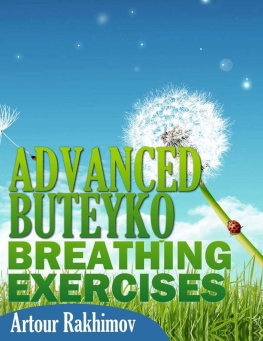Table of Contents
Foreword
In the second part of Georges Hberts Practical Guide to Physical Education, presently the second book in this translated edition of the trilogy of books related to The Natural Method, the emphasis is on the technical aspects, the details of the execution of each movement. Hbert explains that these moves are merely primers, fundamentals to get the body ready, not constituting a complete workout in and out of themselves.
Once again, I devoted my focus on remaining as loyal to the original word, preserving and respecting the authors purposeful rote, but for a few clarifications or simplifications using terms known to most. The reader will notice the frequent use of sentences like the alignment of the Upright Stance is maintained in relation to _____ or the upper body maintains the alignment of the Upright Stance during the movements, except for ____.Hbert wrote like he wanted the instructors to teach, through rote, a model still mostly seen in martial arts or sports.
If you think about it, it all always boils down to the execution of the basics. There is no difference in the technique of throwing a punch whether one is a beginner or advanced athlete, only the quality of the execution. And this is what this book is all about: the execution of the basics. Learn them, love them, live them.
In order to not lose or shift focus and learn how to walk before learning how to run, it cannot be stressed enough that the purpose of this method is geared at developing well-rounded athleticism for all individuals. Any remarks made by Hbert about hypertrophy (increasing the size of the muscles), for instance, is not a knock on bodybuilding or the pursuit of a larger, more developed physique, rather a reminder of the functional and general purpose of the Natural Method, something anyone can do at any age (with appropriate results, encouraging everyone to train, with the caveat of later start, lesser benefits and by contrast, earlier start and greater benefits). Not to sound like a disclaimer, but individual goals will vary. I guess a great analogy would be to say that whether you choose to drive an off-road vehicle in the jungle or a sports car on a race track still requires you to learn how to operate a vehicle, with its gears, pedals, transmission, steering column etc.
In this guide, Hbert makes a strong point about benefits versus results. This becomes clear in the last chapter of the book when the use of equipment such as free weights, fixed apparatuses etc. Indeed, the chapter covers how a freehand, no weights used movement and its loaded counterpart create the same benefits, but offer different results.
As overly simple as it seems, and logical, that doing an exercise with a weight will change its resistance or stimulus on the muscles (by increasing strength, or muscle size, even range of motion), we often forget that the movement is geared at a specific outcome, which can be to open up the shoulders, align the spine, improve balance etc, and that outcome doesnt change. Doing more pull-ups or weighted pull-ups still remains a suspended exercise teaching you how to recruit specific muscles. The loads only change the scaling/difficulty/intensity of the exercise, not the benefits of the movement.
One of my personal favorite benefits of doing these drills is the fact that theyve given me a sense of joy in performing the movements and a nice break from over two decades worth of training with weights, with a focus on either size or strength, and some occasional exercises more specifically geared at either martial arts conditioning or limbering up for surfing. It took for me to burn out, experience staleness, as well as loss of abilities, over time and injuries and the need to regain those abilities, to realize that quality of movement is a birthright and a duty. Not just for ourselves, our family, our community, but more philosophically for our mental state.
I have coached and counseled athletes of all levels (even if athleticism may not be a term used for the everyman/everywoman looking to operate through their life) and yes, it is important to push through plateaus, grind hard, dial up the intensity in order to make ourselves better. But the pedal to the metal approach eventually wears one out, and we all hit that threshold eventually. Without obligation, but with the structure of a few combinations and concepts, whether you use it as a standalone process or in conjunction with your individual goal, this present exercise guide only encourages you to do something we dont do enough of in our society, which is to simply move more. And by moving better, youll progress exponentially, and improve so as well. After that, the world is your oyster!
Enjoy, simply and naturally.
Philippe Til
PS - Since certain pages of the original documents were missing or not legible, rather than fill the information from commonly existing information, I chose to leave any missing segments blank, which encourages the reader to seek the education should they be interested.
PART TWO : BASIC EDUCATIONAL EXERCISES
CHAPTER I : GENERAL CONSIDERATIONS
Goals and principal effects of the basic educational exercises. Corrective movements. Freehand (naked) and with equipment. Main difference between the mechanics of execution of educational exercises and those of practical application. Importance and utility of basic educational exercises.
Basic educational exercises are made up of specific stances and movements of the trunk and limbs, chosen and regulated such as to produce clear and defined effects on various parts of the body.
These effects are the following, in order of importance:
1) Expansion of the thoracic (rib) cage, to provide flow for the heart and lungs.
2) Increase in respiratory capacity, on which a major portion of the individuals strength and vigor depend on.
3) Strengthening of the abdominal walls to contain digestive and visceral organs, prevent obesity and hernias.
4) Development of the muscular system in a harmonious, yet not excessive way.
5) Mobility in all joints and articulations, to promote or maintain flexibility.
6) Seeking and maintaining a proper body alignment.
7) Riddance of any postural defects, such as a rounded back, forward shoulders or an excessive lumbar curve.
The most important benefit from the basic educational exercises, an expanded thoracic cage, is obtained through the development of the muscles retracting the shoulders, straightening the spinal column and raising the ribs.
The movements used to accomplish the expansion of the rib cage tend to always shorten the muscles of the back (dorsals, trapezius and rhomboids) that place the shoulders back and elongate those that tighten the chest and throw the shoulders forward.
From an educational standpoint, it is important to always avoid movements which create pressure in the arms and move the shoulder forward or exacerbate rounding of the spine; in other words, all the movements that cause lengthening of the back muscles and shortening of the pectorals.
Individuals who exclusively work out these contra-indicated educational exercises demonstrate an incorrect posture: their back hunches, shoulders round forward and the chest becomes imprisoned by the mass of the pectoral muscles that are shortened.
The movements that help acquire and maintain proper posture, meaning those aiding the expansion of the thoracic cage, correct poor shoulder positioning, straighten excessive curvature of the spine and develop the abdominal muscles are called corrective exercises.
The basic educational exercises described later are all corrective exercises, thanks to the specific mechanics of their execution, which satisfy all of the above needs.
Next page
